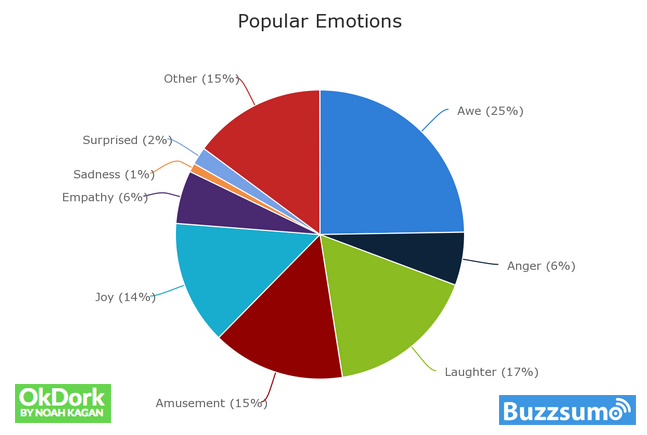Behind the Scenes: Simple Explanation of the Video Production Process
This blog was updated for accuracy and relevance on July 9, 2024.
13 min read
 Ed Heil
:
June 18, 2024
Ed Heil
:
June 18, 2024
This blog post was originally published on August 2, 2022. It was updated and republished on June 18, 2024.
We find that clients are eager to sit down with us to discuss how we can use video to tell their best stories. And we always look forward to that opportunity. It’s not surprising that every organization would like their story told in a unique and special way, but there are a few core options to consider that are universally important for those looking to produce a video. Here's a comprehensive list of the essential video production questions you should answer before you roll the cameras.
Click one of the questions below to jump straight to that section:
1. Why do you want to create a video?
2. Who is your target audience?
3. What are your 3 key messages?
4. What is your ideal timeline?
5. What is your project budget?
6. Is your video part of a strategy or campaign?
7. How will you measure results & ROI?
8. What emotion are you trying to evoke?
9. What specific visuals should be captured?
10. Who will speak on behalf of the organization?
11. What questions should you ask the interview subjects?
12. Should you script the answers to the questions?
13. What happens if they don't get the answer right the first time?
14. Should you correct someone if they say the wrong thing?
15. Who needs to approve the final video?
16. Where will the video be filmed?
17. How will the final video be hosted, distributed, and repackaged?
18. Bonus: The one question you shouldn't ask
19. Conclusion
In most conversations we have with prospects about making a video for their organization, we are told their reason is to “create something for their website." It makes sense. Producing a video for your website is essential because video content effectively communicates the most information in the shortest amount of time–and in the most compelling way. But investing in a video isn't just about checking a box. Not asking yourself what you want to communicate and why you want to convey it will result in a confusing message, making measuring success very difficult.
Take time to think about what you want your video to say and write a well-thought-out vision that answers the question, "What exactly are we trying to achieve by producing this video?"
Instead of...
"We want a video to put on social."
Try:
"We want to create a video that shares our organization's values and establishes a sense of credibility to the work that we do."
Knowing the "why" behind your video will help you create a superior—and more versatile—piece of compelling video content.
We talk a lot about the audience because, well, it's really important! It is one of the most crucial questions you need to answer before you begin thinking about your message in a video. We see a number of organizations getting caught up in who they are and what they are all about. Those story points are critical, but they must be presented in a way that resonates with the audience they're trying to reach. Otherwise, you're just pounding your chest and talking about yourself—without regard to your intended audience.
Before you write one line of copy, know who you want to watch your video. Answering the "who" first will help you line up all the other pieces of your video project; elements like messaging, graphics, visuals (also known as b-roll), editing, and even music selection. Think about how your message can strike the strongest chord among your audience. For example:
When deciding what messages and production styles to connect with your audience, ask these questions:
These questions will help you better understand what type of video to create and how to craft your message to resonate with your target audience. We create buyer personas for our clients—fictional, generalized representations of ideal customers—specifically to help our clients understand who their video is intended to reach before we begin the video production process.
Let’s assume your video will be crafted with interviews of key players within your organization. Before you begin drafting interview questions, take the time to research and gain a better understanding of what you’re trying to communicate. Also, share the questions with the interview subject so they know what is coming. This way both you and your interview subject will be prepared when the lights go on and the camera starts to roll. One note, make sure the interviewee doesn’t memorize the answers, this will come off as stiff and disingenuous. Instead, have them shape the answers in their head so they can speak fluidly and extemporaneously.
Many company videos make the mistake of trying to share too many messages in one video and end up failing to communicate anything valuable at all. Instead, determine the most important aspects of your message—those that must be understood to effectively reach your target audience.
The easiest way to avoid information overload is to identify 3 key messages to communicate in your video. Make them clear, concise, and influential or inspiring. Then, write them down and run every interview question through your 3 key messages as a filter.
Let's say these are your three key messages for your video:
Ensure every interview question you ask is open-ended and can be answered with one of those three key messages.
Behind every good video is a strategy. Simply arriving at your production location with a camera and a microphone won’t capture the results you’re looking for in your video. You must begin with a plan–and that includes clear messages.
You wouldn't need to partner with a video production company if it only took 30 seconds to produce a 30-second video. It can take weeks, if not months, or even years. This is why it's essential to communicate your ideal timeline and due date with your video team while you are in the planning phase. This will help you avoid missing deadlines or creating “fire drills” as you progress with the project.
Every internal video team or production company has a standard timeline for video turnaround. However, if you need your video completed quickly, simplifying the project scope can yield a faster turnaround time. Conversely, if you have a complex and detailed vision for your piece, share it with your producer and understand that bringing that vision to life might take longer.
Just like the video timeline, the simplicity or complexity of your video project will affect the final budget. If you have a specific budget in mind, be sure to communicate that with your video team.
Not all video is created equal. Depending on several variables, your video can go from affordable to expensive very quickly. The critical thing to remember is time, people, and gear tend to drive the cost of video production. It can be done if you want to produce a video with underwater footage, mountaintop vistas, and five different locations–just be prepared to spend more. Likewise, maybe a series of shorter, well-planned pieces on your website landing pages is the perfect use of video for your organization. The resources you use and how you use them will determine the cost of your video.
Ultimately, the cost of your video is related to the number of professionals needed to help execute the vision. It will likely cost more if your story is best told using multiple cameras, an audio technician, and a field producer over multiple filming dates. The budget will likely be less if the best way to tell your story is to capture it with one camera during one half-day of filming.
Check out this guide to help you identify which video production company is best for your budget.
Related Blogs: |
Video can be a crowning piece to a goal-oriented, multiple-platform marketing campaign. But if you're planning a video as part of a bigger initiative or strategy, communicate your plan with your video producer. With a solid understanding of the larger vision, a thoughtful and strategic video company can help you maximize your efforts for efficiency and deliver a presentation that leverages the greater strategy.
There are tremendous economies of scale when making the most of your video production budget. By creating a clear blueprint of the information you hope to communicate, you can often extend your video filming time incrementally, capture more content to feature across your campaign and leverage your production dollars to enhance your message.
Are you looking to drive video views, product demos, sales, or donations? Each metric requires a different video strategy. Knowing your success metrics can shape the video's vision to meet those goals.
Enlist your entire team and direct them to think through what would make the video a success. Maybe the metric is leads generated, views on YouTube, dollars donated, or all of the above. Clarifying this, not only aligns your video production team with that same goal, but it also generates buy-in from your internal team when the process is successful.
If your organization is looking simply for more awareness or exposure, views or social media shares might be your goal. If you want more leads, you may want to add a call-to-action (CTA) at the end of your video, which leads to a page where the viewer can fill out a form in exchange for more content or a preliminary service (an eBook, a free consultation/assessment, etc.).
For every video, we recommend setting SMART goals, which translate to being:
Setting SMART goals ahead of time will not only provide a framework for ROI but also give the entire project a clear direction, from planning through execution.
Once you've determined who the audience is, the next step is to determine what–and how–you want that audience to feel after watching your video. The reason people engage with content is because it makes them feel something. Creating that impression falls on the person creating the video, whose job is to bring the message to life in a way that touches the viewer.
When that specific audience is watching your video–either on your website, through an email campaign, or at an event–what do you want their action to be after the images fade to black? Whether you want someone digging into their pockets for a tissue and checkbook or feeling motivated to click the “buy now” button, that overriding feeling you want to create needs to be reflected in the messaging, the visuals, and the overall tone of the piece.
A 2014 study by the marketing blog, OkDork, looked at the 10,000 most shared pieces of online content. The most common emotions evoked were:
:

Although sharing your video online may not be your ultimate goal, the study does illustrate the emotional impact of video. Keep this in mind as you craft the concept and execution of your video.
As you work through the pre-production process, take time to identify specific images that you believe will best depict your message visually. It’s essential to look ahead and consider key events, scenarios, or the schedule of key individuals to ensure they are included in your video production. For instance, if your manufacturing facility is busiest right before the holidays, it may be wise to schedule the filming to showcase the capacity and scope of your operations.
By default, many organizations will immediately turn to the C-suite when identifying characters and spokespeople for a company video. No matter how photogenic or enthusiastic they are, we often recommend not using ‘the boss' as the voice for your video. A CEO speaking into the lens can come across as aloof or stuffy, as they often get caught up in trying to communicate too much in the time they have.
Your CEO may give the audience the "wow factor," but if you're in the business of generating revenue, the "trust factor" is really what you're after. You want to capture the heart and soul of your organization, which can be better communicated by the people on the ground floor of your company. Research shows viewers trust companies more when they feature employees in videos than executives. They've witnessed how your organization has helped improve lives. So when they talk about the quality of the work and the company's integrity, they speak from direct experience.
Remember: your speaker doesn't necessarily need to be from your company. A satisfied, well-spoken customer or even a paid, on-camera talent might be the best choice for your video content.
Creating interview questions for a documentary-style video is an integral part of the video production process. If you're working with a video producer, lean on that person to help you create interview questions. If you're making the video on your own, take some time to craft a series of targeted, thought-provoking questions for your subject.
Send your interviewee a list of five sharp, open-ended questions ahead of time. But be sure to instruct your interview subject to avoid memorizing the questions. You want them to feel comfortable about the line of discussion and consider how they might answer questions. Let them know you might go off-script with follow-up questions or anything else that comes to mind during your conversation.
As you formulate the questions, consider their perspective on the topic–what insights could they provide that nobody else could? Try to avoid closed-ended questions (ones that could be answered with a simple "yes" or "no"). Listen for opportunities to drop a follow-up question–your next excellent sound bite could be hiding in the following answer.
Probably not. You're looking for genuine, thoughtful answers, not robotic responses. Fresh, off-the-cuff answers usually lead to natural reactions and compelling sound bites unless your interview subject is uncomfortable with spontaneous discussion. Let them know the interview is not intended to be a rigid Q&A session but rather a conversation and an exchange of thoughts and ideas. Once they relax and realize they’re simply talking with another person, they’ll forget about the camera and provide the insights and commentary needed for a compelling narrative.
Most of your video interviews will not be live, so if the interview subject misses or stumbles, always allow them to try again. If your subject doesn't get it right the first time, rephrase the question as you ask again so they can respond naturally.
Some people find being on camera difficult. If your interview subject is nervous and struggling to relax, try asking some “warm-up” questions to put them at ease. Rather than getting right down to business, toss some off-topic ice-breakers their way. A good video producer conducting the interview will help the interviewee forget that they are in front of the camera and make them feel more like they are talking to a friend.
Give your interview subject some time to finish the question. Avoid the temptation to jump in while your interviewee is speaking, even if they're a little off-course, because you'll risk interrupting a usable sound bite, or you could disrupt the flow of the conversation. It's natural to react to the words we hear, and that's terrific—even preferred—just try your best not to interrupt while your interview subject is speaking.
If the interviewee finishes answering and misses the mark, you can take a moment to explain the message you’re hoping to hear before asking the question again or moving on.
Before you get started with a video project, it's important to identify the key stakeholders involved in reviews and revisions. In our experience, “sign-off” can come from a small group in your department, or it could go all the way to the CEO. If your company requires layers of approval, adding a few extra days to your project timeline might be helpful to ensure you don't get behind.
Try to designate a project manager, or primary point person, responsible for gathering the suggested edits so there isn’t conflicting feedback for the producer. Streamlining this process can save time and money while minimizing confusion for your video production team.
Filming locations often depend on the story you are telling. Many of our productions are on location, whether it's at company headquarters, industrial factories, or amid beautiful outdoor scenes. On the other hand, your needs for filming may require studio space where you can control lighting, backdrop, and sound.
Many organizations have limited options of where their video can be filmed, especially if the goal of the video is to communicate company culture. Keep in mind several factors as you decide where to film your video:
Our overarching advice to clients is to choose a location that represents your organization most accurately, and keep it simple!
Keep the end product in mind during the video planning process. Are you going to host it on YouTube? Would you like to link it to another video? Is it going on Instagram or in an email? All of the above?
The answer to those questions will determine the best method of delivering your video to your intended audience.
The use cases for an impactful video can vary widely, but you can assume several realities based on what you already know:
A video will be produced and edited differently based on where you feature it. Be sure to think through the strategy to know what end product(s) you're working toward. What you don't want is for your video investment to be wasted because you didn't plan how it was going to be used and, more importantly, watched ahead of time.
Sure, you don't want to bore your audience with a 20-minute video about your culture, and you also don't want to try forcing your organization's history and mission into an 8-second blitz. However, setting a specific “run time” for your video in advance is not the right approach. Instead, let the content drive the length of the video.
The bottom line is if your content is compelling, people will stick around and watch. If it's not, they won't!
Every video project is different, but these universal video production questions should help you determine what your video should look like and what you want it to achieve.
Taking these steps before partnering with a video production company will save time and money, decrease confusion, and create a video you and your team can be proud of. If you have more questions or are unsure how to get started, consult your video production team to help you think through these strategies, identify key takeaways, and create a plan to produce your video.

This blog was updated for accuracy and relevance on July 9, 2024.

This blog was originally published in 2016 and was updated in July 2024. You have brainstormed, planned, and created your budget, but are you ready...

At its best, producing videos for your business or organization can be fun and creative. It's an outlet that gives your communications or marketing...